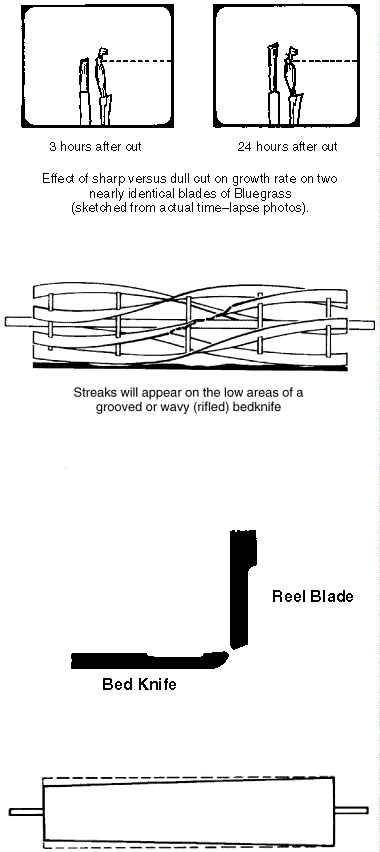
How can you tell if sharpening is necessary?
One sure way to determine the answer to this is by actually checking the cutting edges of the reel and bed knife to see if they are dull, nicked, bent or being run without "light contact" against one another.
A grooved or wavy (rifled) reel or bedknife is most often caused by operating the cutting unit with too much bedknife to reel contact. This condition can only be corrected by grinding the reel and bedknife - backlapping will not correct this condition.
Reel blades, and the edge of the bedknife, should be checked for damage visually and by carefully feeling the edges. Of course, this should only be done when it is certain that the engine is off and reel cannot be started . . . and never slide your fingers down the edges lengthwise.
Rounded edges on the reel blades and bedknife will cause the grass blades to be pinched and torn, rather than sheared off cleanly. When "light contact" is not maintained, dull edges will soon result.
Sharpening will also be required if the reel is "cone shaped" (tapered) or "rifled".
All reels eventually become tapered with use. If the reel is not adjusted or ground to a cylinder shape again, a mismatch in the height cut between adjacent reels can result.